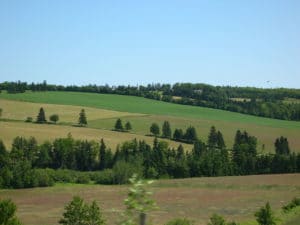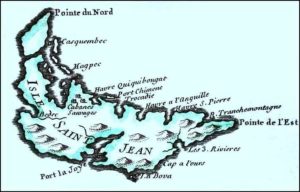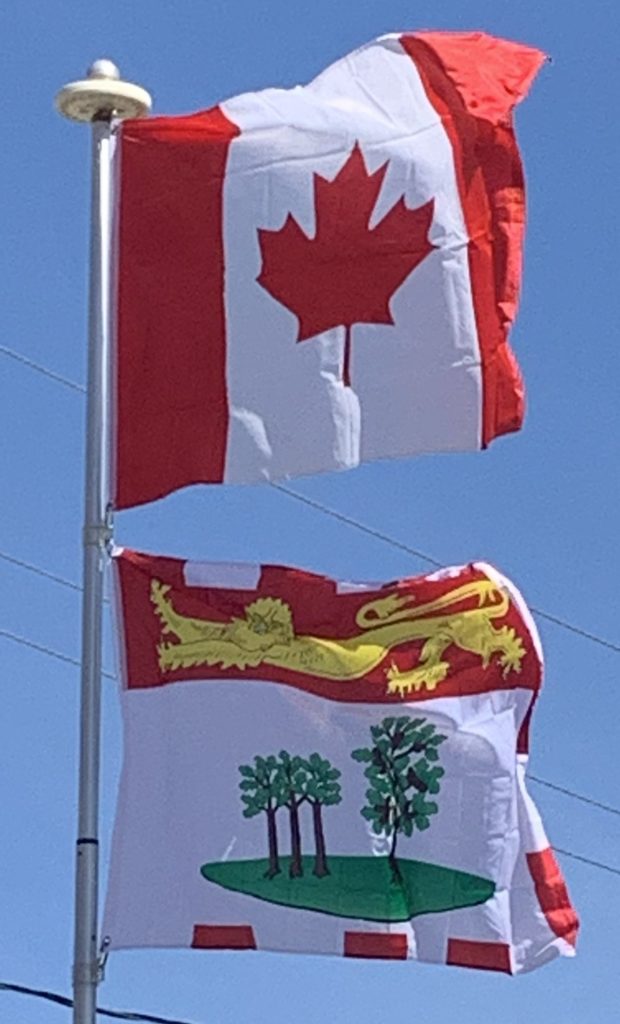The island’s landscape is pastoral. Rolling hills, woods, reddish white sand beaches, ocean coves and the famous red soil have given Prince Edward Island a reputation as a province of outstanding natural beauty.

The island’s lush landscape has a strong bearing on its economy and culture. The author Lucy Maud Montgomery drew inspiration from the land during the late Victorian Era for the setting of her classic novel Anne of Green Gables (1908). Today, many of the same qualities that Montgomery and others found in the island are enjoyed by tourists who visit year-round. They enjoy a variety of leisure activities, including beaches, various golf courses, eco-tourism adventures, touring the countryside, and enjoying cultural events in local communities around the island.
The smaller, rural communities as well as the towns and villages throughout the province retain a slower-pace. Prince Edward Island has become popular as a tourist destination for relaxation. The economy of most rural communities on the island is based on small-scale agriculture. Industrial farming has increased as businesses buy and consolidate older farm properties.
The coastline has a combination of long beaches, dunes, red sandstone cliffs, salt water marshes, and numerous bays and harbours. The beaches, dunes and sandstone cliffs consist of sedimentary rock and other material with a high iron concentration, which oxidises upon exposure to the air. The geological properties of a white silica sand found at Basin Head are unique in the province; the sand grains cause a scrubbing noise as they rub against each other when walked on, and have been called the “singing sands”.
Large dune fields on the north shore can be found on barrier islands at the entrances to various bays and harbours. The magnificent sand dunes at Greenwich are of particular significance. The shifting, parabolic dune system is home to a variety of birds and rare plants; it is also a site of significant archeological interest.
Despite Prince Edward Island’s small size and reputation as a largely rural province, it is the most densely populated province in Canada.
History:
Since before the influx of Europeans, the Mi’kmaq First Nations have inhabited Prince Edward Island as part of the region of Mi’kma’ki. They named the Island Epekwitk, meaning “cradled on the waves”; Europeans represented the pronunciation as Abegweit. Another name is Minegoo. The Mi’kmaq’s legend is that the island was formed by the Great Spirit placing on the Blue Waters some dark red crescent-shaped clay. There are two Mi’kmaq First Nation communities on Epekwitk today.
French Colony:
In 1534, Jacques Cartier was the first European to see the island. In 1604, the Kingdom of France laid claim to the lands of the Maritimes, including Prince Edward Island, establishing the French colony of Acadia. The island was named Île Saint-Jean by the French. The Mi’kmaq never recognized the claim but welcomed the French as trading partners and allies.

During the 18th century, the French were engaged in a series of conflicts with the Kingdom of Great Britain and its colonies. Several battles between the two belligerents occurred on Prince Edward Island during this period. Following the British capture of Louisbourg during the War of the Austrian Succession, New Englanders launched an attack on Île Saint-Jean (Prince Edward Island); with a British detachment landed at Port-la-Joye. The island’s capital had a garrison of 20 French soldiers under the command of Joseph du Pont Duvivier. The troops fled the settlement, and the New Englanders burned the settlement to the ground. Duvivier and the twenty men retreated up the Northeast River (Hillsborough River), pursued by the New Englanders until the French troops were reinforced with the arrival of the Acadian militia and the Mi’kmaq. The French troops and their allies were able to drive the New Englanders to their boats. Nine New Englanders were killed, wounded or made prisoner. The New Englanders took six Acadian hostages, who would be executed if the Acadians or Mi’kmaq rebelled against New England control. The New England troops left for Louisbourg. Duvivier and his 20 troops left for Quebec. After the fall of Louisbourg, the resident French population of Île Royale were deported to France, with the remaining Acadians of Île Saint-Jean lived under the threat of deportation for the remainder of the war.
